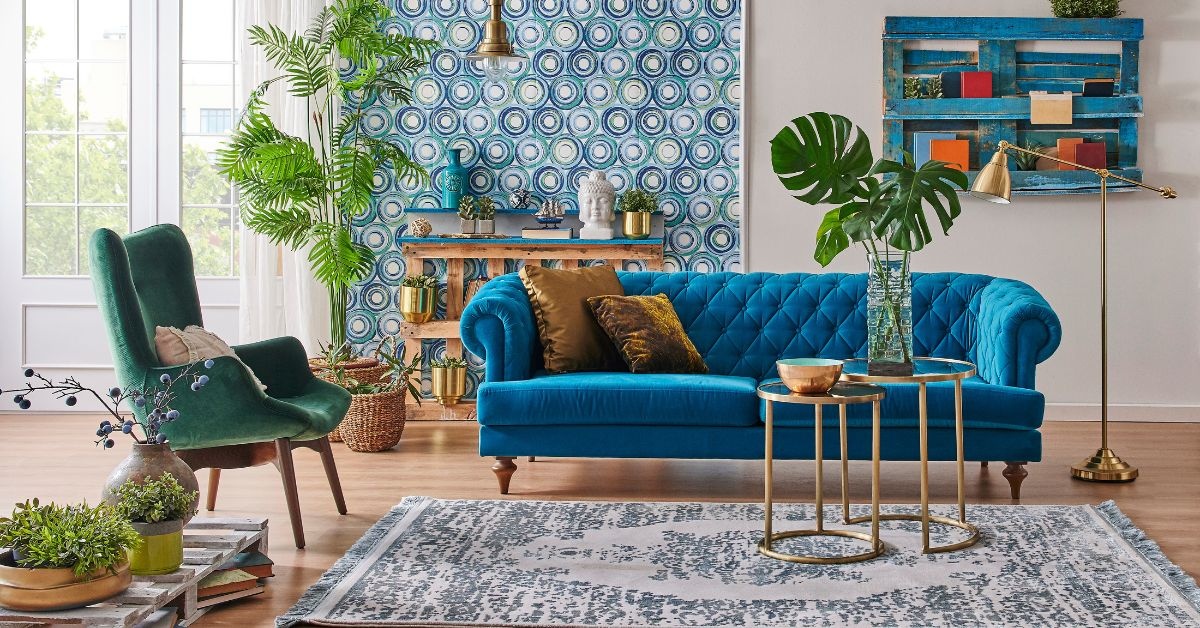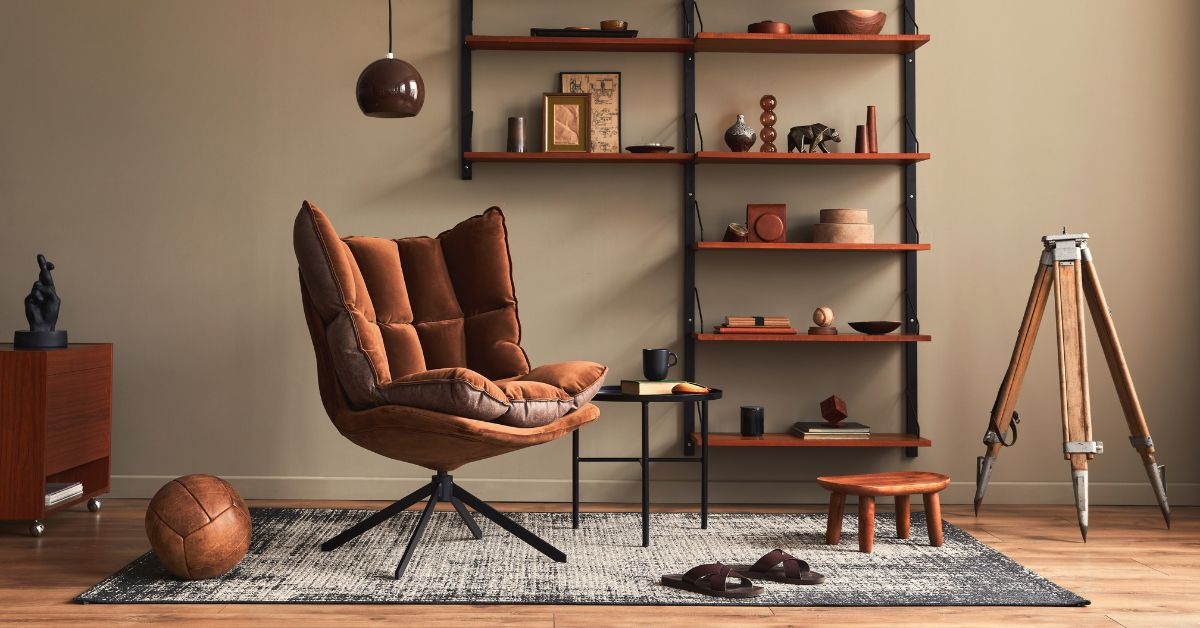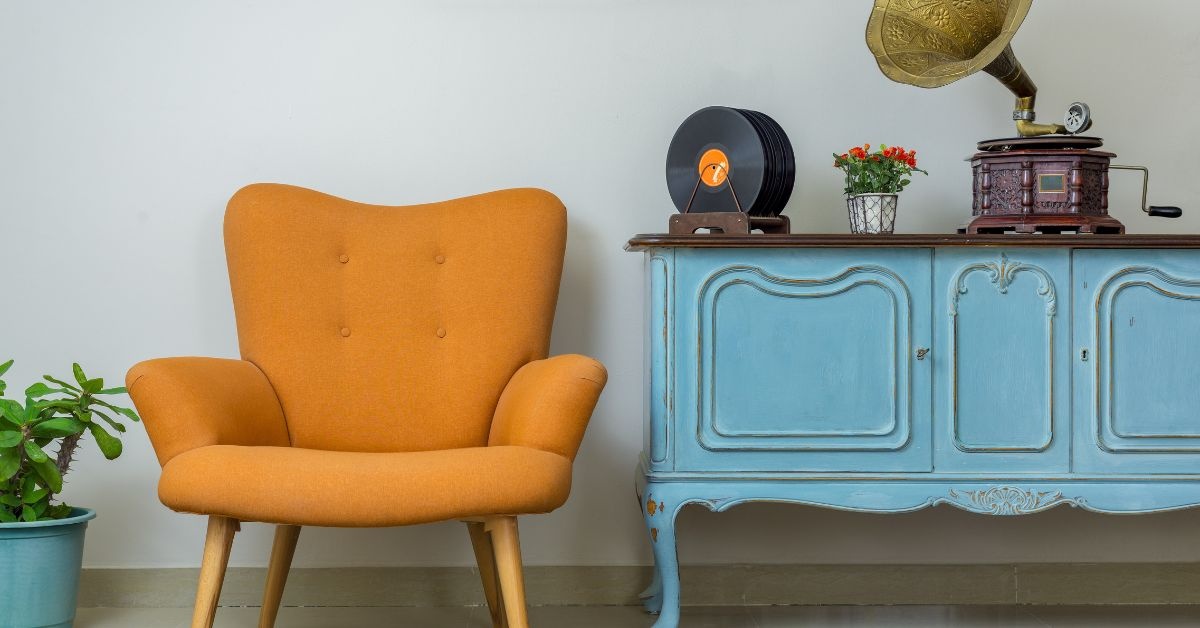
How To Mix Vintage and Modern Furniture Styles
Striking a balance between timeless vintage charm and sleek modern design can transform your home into a unique and dynamic space. Bringing these two styles together allows homeowners who value the intricate details of vintage furniture and crave the simplicity of modern design to create a space that tells a story. This approach blends influences from different eras and adds layers of personality. Mixing vintage and modern furniture styles may seem like a design and financial challenge, but a few guiding principles can help you achieve a beautiful and harmonious result. Here’s how to mix vintage and modern furniture styles.
The Essence of Vintage Style
Vintage furniture includes items that are at least 20 years old but often contain elements of craftsmanship and design from a bygone era. Think of the following elements:
- Ornate woodwork
- Rich fabrics
- Time-tested construction
These items may carry a sense of nostalgia, character, and history that you can’t replicate with mass-produced modern items. For example, a hand-carved wooden sideboard with brass fittings or a mid-century armchair with curved lines can infuse warmth and sophistication into your space.
The Core of Modern Style
On the other hand, modern furniture champions function and simplicity. It originated in the early to mid-20th century and emphasizes the following features:
- Clean lines
- Neutral palettes
- Minimal embellishments
Current interpretations lean even more toward sleek looks with innovative use of metal, glass, molded plastic, and other materials. Examples include a minimalist glass-top coffee table or a sectional sofa with geometric shapes.
Finding Balance Between Old and New
You want your room to feel curated instead of chaotic, so start by choosing a dominant style for your space. This styling choice doesn’t mean prioritizing one over the other—it’s simply about complementing the space.
For example, use vintage elements as accents to add warmth and character if you prefer the modern aesthetic more. On the flip side, a room dominated by vintage furniture can feel refreshed and refined with the addition of modern lighting or artwork.
A helpful approach is the 80/20 rule, where 80 percent of your design leans toward one style and the remaining 20 percent serves as complementary. For instance, pair a sleek modern sofa (80%) with some vintage side tables (20%). This ratio prevents the space from feeling too disjointed.
Create Focal Points

Mixing styles doesn’t mean everything must clash or compete for attention. Select a statement piece or two to be focal points in the room and design around them. For example, a vintage rug with intricate patterns could anchor your living room, allowing modern furniture with clean lines to play a supporting role. Alternatively, a modern credenza can serve as the centerpiece in a dining room full of vintage dining chairs.
Playing With Color and Texture
Color and texture are the glue that holds different styles together. Once you choose your furniture, focus on creating visual cohesion by harmonizing hues and materials. A cohesive color scheme is an easy way to tie vintage and modern styles. Stick to a few key shades that recur across both types of furniture.
For example, incorporate the softness of pastel vintage furniture into your modern pieces by selecting soft gray or white tones. You can also use neutral tones—such as beige, cream, gray, or black—as a grounding backdrop that allows bolder vintage or modern items to stand out.
Experiment With Complementary Textures
Different textures can bring dimension and depth to your room. Pair smooth, modern elements, such as a lacquered coffee table, with more tactile vintage ones, such as a tufted velvet armchair. Similarly, mixing materials—such as a vintage wooden dresser with a modern glass lamp—can balance the warmth of organic elements with the coolness of contemporary styles.
Textures in throw pillows, rugs, curtains, and similar small items also go a long way. A handwoven vintage kilim can add a layer of detail and personality to a modern sofa, while metallic finishes often found in modern candlesticks or photo frames can provide contrast and polish to aged wooden surfaces.
Practical Examples of Combining Pieces
Consider the following creative approaches for combining vintage and modern furniture in key spaces.
Living Room
Consider placing a vintage wood or marble coffee table at the center of your living room if it has clean and modern seating, such as a low-profile sectional. Its patina adds depth to the otherwise streamlined setting.
You can also pair a vintage sofa or armchair with a sleek modern floor lamp, such as a minimalist arc lamp or a piece with a metallic finish. Combining these elements feels intentional rather than mismatched.
Dining Room
Use a vintage dining table with more modern chairs or vice versa. For example, a farmhouse-style wooden table pairs beautifully with futuristic molded plastic chairs. Similarly, modern dining tables look stunning alongside mismatched vintage seats.
Pro Tip
Install a geometric-style or metallic pendant light over your vintage table setup to refresh and enhance its old-world vibe to make a statement.
Bedroom
Want to emphasize coziness and style in the bedroom? Try creating contrast by pairing a vintage wrought iron or upholstered bed frame with modern, minimalist bedding. Doing so reinvigorates the room without overwhelming it.
Maximize the style by using mismatched side tables from different styles. Consider placing a vintage table on one side and a sleek modern nightstand on the other. Keep cohesion by coordinating lamp styles or colors.
Accessories and Decor That Bridge the Gap

While tackling the major furniture pieces, don’t forget about the final additions that help connect the two styles. Rugs, throw pillows, artwork, and even indoor plants can bridge vintage and modern elements. For example, a bold, abstract piece of art will pair beautifully with an antique wooden chest.
Meanwhile, placing vintage trinkets or framed black-and-white photos atop a modern console creates a visually interesting mix. These smaller touches bring personality and make your space feel deliberately styled rather than rushed.
Get Grand Furnishings To Create a Grand Mix of Styles
Getting stylish large furnishings and accent items to mix and match doesn’t have to be an expensive venture. Likewise, it doesn’t have to be a time-consuming task in which you wait for furniture to ship from miles away; turn to a trusted, local retailer. Homeowners in Virginia can acquire high-quality, well-crafted furniture for a reasonable, honest value from Grand Furniture at several locations throughout the state.
Browse the effective payment options we offer at Grand Furniture and buy furniture on credit to upgrade any living room, dining room, or bedroom. Our affordable, attractive, dynamic, and durable furniture suits any interior design style, from vintage to modern, to any preference you have.
Mixing vintage and modern furniture styles is a rewarding process that lets your personality shine through in your home. Achieve harmony by understanding how to mix vintage and modern furniture styles, maintaining balance, and focusing on color, texture, and thoughtful combinations. Have fun pairing vintage and modern elements in intentional and cohesive ways and create a space that feels uniquely yours.


